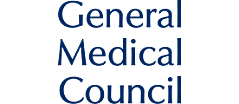What causes forehead acne?

Medically reviewed by
Dr Kathryn BasfordLast reviewed: 09 Mar 2022
Forehead acne can be caused by excess oil in the skin. It can look like a large concentration of spots in the T-zone area from the forehead down to the nose and chin. If there are pimples right at the top of your forehead, in the hairline, these could be caused by an allergic reaction to your shampoo or conditioner.
What causes acne on your forehead?
Acne on your forehead, like any type of acne, is often caused by hormone changes. This usually happens during puberty but can occur at any age.
Certain hormones cause the glands next to hair follicles to produce too much oil in the skin (abnormal sebum).
As a result of this, a usually harmless skin bacterium called P. acnes starts to act differently. It causes a build up of pus and visible inflammation on the skin.
The hormones also thicken the inner lining of the hair follicle causing blockage of the pores. Cleaning the skin does not help to remove this blockage.
Acne often runs in the family. So if either your mother or father had acne in their lifetime then it’s likely that you will too. Hormonal changes, which can be caused by taking the contraceptive pill or pregnancy, can also lead to adult acne.
There is currently no evidence that poor diet, hygiene habits or sex can cause forehead acne.
Different types of forehead acne
There are 3 main types of forehead acne, and these are the most common:
- comedonal acne, which is made up of blackheads and whiteheads
- inflammatory acne, which includes papules, pustules, nodules and cysts
- nodular and cystic acne, which is made up mainly of nodules and cysts
There are different acne treatments that can help with forehead acne, depending on the type of spots on the skin.
Comedonal acne
Comedones are skin coloured bumps that form when you have a spot or pimple. Comedonal acne includes blackheads and whiteheads. This is generally a milder form of forehead acne.
Blackheads are known as open comedones. You might think because of their colour that blackheads are filled with dirt. However, when you have blackheads, it’s because large pores are clogged up with excess oil. A chemical reaction occurs under the skin turning the oil darker.
Whiteheads are known as closed comedones. This is when follicles under the skin are filled with bacteria and air is not able to enter the follicle. Unlike blackheads, the skin oils inside of them do not undergo a chemical reaction so it stays white.
In addition to the forehead, comedonal acne can occur on your back and shoulders.
To treat comedonal acne at home, you can use over the counter or prescription medicayions.
A comedone extraction treatment can help clear out comedonal acne blackheads and whiteheads. This normally has to be done at a specialist skincare clinic by a dermatologist.
Inflammatory acne
Inflammatory acne often includes papules, pustules, nodules and cysts. This can be a moderate to severe type of forehead acne.
Inflammatory acne usually starts with blocked pores. Over time, dead skin cells and excess oil accumulate in the pores with bacteria. This build up of pressure on the pore causes it to break open and overflow into the skin. White blood cells then come in to repair the damage, and this can lead to redness, swelling, and irritation.
Papules and pustules are the most common types of inflammatory acne. As it progresses you may get more severe types of acne, like nodules and cysts. These occur deeper in the skin and are more likely to cause permanent acne scarring, especially if you pick them.
Sometimes, over the counter medicines are not enough to treat inflammatory acne and you may need to try prescription medication.
Nodular and cystic acne
Nodular and cystic acne is caused by inflammation, in the deeper layers of the skin.
With nodular and cystic acne, hormones cause the build up of pus and inflammation. The inner lining of the hair follicles becomes thicker which causes blocked pores. Cleaning the skin does not help to remove this blockage.
Inflammation deep in the skin’s layers can cause hard nodules which are hard and painful to touch.
Cystic acne occurs when bacteria, dead skin cells, and sebum gets trapped beneath the surface of the skin and becomes infected. This leads to a large, swollen cyst (bump) that can be painful to touch too.
Over the counter medicines are less likely to help with nodular and cystic acne. You can try prescription medication from Asda Online Doctor.
For further nodular and cystic acne treatment, you can speak to a doctor that specialises in skin, such as a dermatologist.
How to treat acne on your forehead
There are several ways to treat acne on your forehead. These include:
- over the counter acne treatments you can get from a pharmacy
- acne prescription medication from a doctor, such as Asda Online Doctor
- skincare, which you build into your daily routine to keep your skin healthy
- lifestyle changes, that can help reduce the chances of getting acne in future
Over the counter acne treatments
Over the counter treatments are helpful for treating mild forehead acne like blackheads and whiteheads. These are products that can be found at a pharmacy or a skincare clinic. You do not usually need a prescription for these milder types of acne.
Gels, creams and lotions can help to open the pores, allowing the bacteria and dirt to be washed away before acne forms.
Look for products that contain benzoyl peroxide or salicylic acid. Both dry out acne spots and remove oil and dead skin cells that could be clogging your pores.
Acne prescription medication
Acne prescription medication might be an option if your acne includes papules, pustles, nodules and cysts. When you fill in an online questionnaire with Asda Online Doctor, one of our doctors can help choose the acne treatment that’s right for you.
Sometimes you may need to use more than one type of acne treatment at the same time, depending on how to respond to certain treatments. For example, lymecycline and Differin gel. It’s important to note that you may need to use acne treatments for a few months before you see a big improvement in your skin.
Zineryt is a liquid acne treatment that you apply on the surface of your skin. It contains an antibiotic called erythromycin that kills bacteria to help clear your skin.
Differin gel and Differin cream both contain a retinoid (a type of vitamin A). You can use either one to treat acne, but you may prefer the gel if your skin is naturally oily, as it absorbs faster.
Aknemycin Plus contains an antibiotic and retinoid to actively get rid of spots and blackheads.
Lymecycline capsules and Epiduo gel together are an effective combination for treating acne that has not responded to other acne treatments.
Epiduo gel contains adapalene, a type of retinoid, and benzoyl peroxide to encourage your skin cells to renew themselves and even out your skin.
Lymecycline is an antibiotic that helps kill bacteria. However, lymecycline can make your skin sensitive to sunlight and UV light. If you are pregnant or breastfeeding you should not use tetracyclines, you should speak to your doctor about what options would be safe for you.
Sometimes forehead acne could be linked to your menstrual cycle, and changes in your hormones that happen around your monthly period. Taking the combined contraceptive pill could help to regulate your hormones and reduce acne outbreaks.
from £59.00
from £19.50
from £24.00
from £34.50

No results found.
Please check your spelling or try another treatment name.
Skincare
Skincare involves the use of cleansers, moisturisers, serums and creams. To keep your skin feeling good, you may want to have a daily routine.
You may want to try a daily routine that includes:
- washing your face every morning and evening with a gentle cleanser
- patting your face dry with a soft, clean towel, rather than rubbing
- applying a hydrating or anti-acne serum, before using a moisturiser
- using a non comedogenic light moisturiser to rehydrate your skin
- avoiding using products that are greasy, ointments or oils on your skin
There are several skincare treatments for acne available that do not involve taking medication, and are available at a skincare clinic, for example:
- a comedone extractor procedure to clean out blackheads and whiteheads
- a chemical peel to remove the outer layer of skin
- using photodynamic light therapy on the forehead
Lifestyle changes
Lifestyle changes can help improve forehead acne and prevent it from coming back.
One lifestyle change you may want to consider is keeping your stress levels under control, and this might include taking steps like:
- drinking less alcohol
- getting more sleep
- practising mindfulness techniques
Stress and anxiety do not directly cause acne breakouts. However, research shows that it triggers hormonal changes. It may worsen existing acne especially if you are already prone to spots and pimples.
Other lifestyle changes include:
- eating a healthy, balanced diet that includes plenty of protein, fresh fruits and vegetables, good fats, as well as high fibre whole grain foods
- making sure you are eating enough each day to be able to repair your skin
- getting enough exercise to improve blood flow to your skin and help the repair process
- drinking enough water each day to maintain the flexibility and suppleness of your skin

Dr Kathryn Basford is a qualified GP who works as a GP in London, as well as with ZAVA. She graduated from the University of Manchester and completed her GP training through Whipps Cross Hospital in London.
Meet our doctorsLast reviewed: 09 Mar 2022
-
Acne, NHS [July 2019] [accessed January 2022]
-
Acne, NICE/CKS [accessed January 2022]
-
Acne, Primary Care Dermatology Society [accessed January 2022]
-
Acne, NICE/BNF [accessed January 2022]
-
Differin gel, Summary of Product Characteristics, EMC [accessed January 2022]
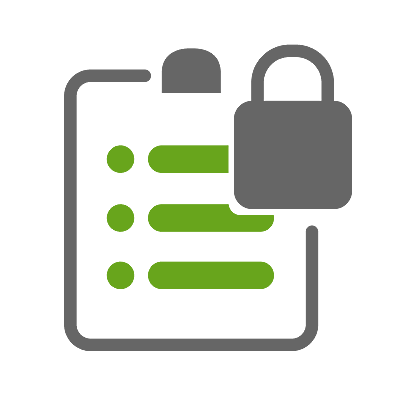
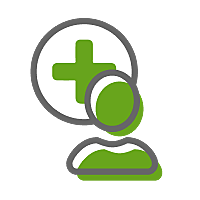

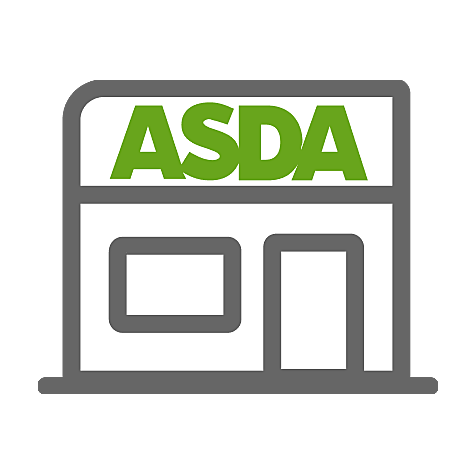
(Reviews are for ZAVA UK)


GMC: 7074021
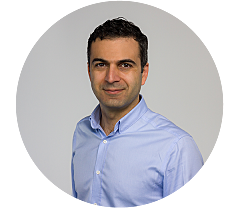
GMC: 6149061

GMC: 7085115
